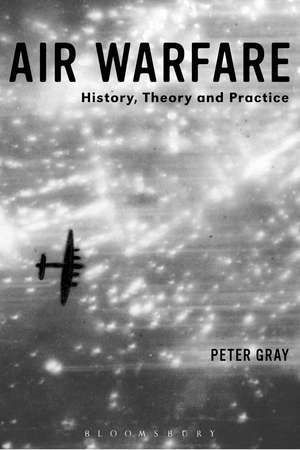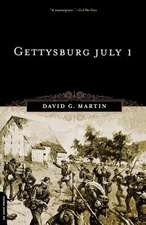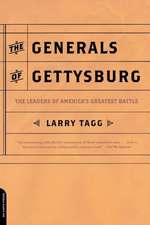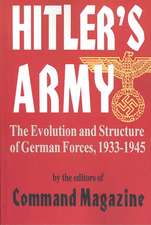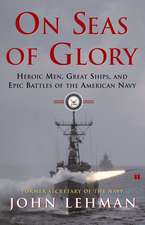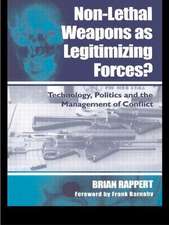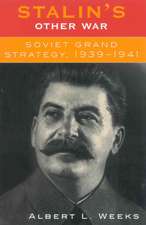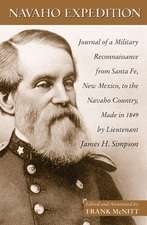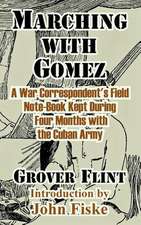Air Warfare: History, Theory and Practice
Autor Air Commodore (Ret'd) Dr Peter Grayen Limba Engleză Paperback – 18 noi 2015
| Toate formatele și edițiile | Preț | Express |
|---|---|---|
| Paperback (1) | 181.77 lei 43-57 zile | |
| Bloomsbury Publishing – 18 noi 2015 | 181.77 lei 43-57 zile | |
| Hardback (1) | 714.12 lei 43-57 zile | |
| Bloomsbury Publishing – 18 noi 2015 | 714.12 lei 43-57 zile |
Preț: 181.77 lei
Preț vechi: 208.69 lei
-13% Nou
Puncte Express: 273
Preț estimativ în valută:
34.79€ • 37.81$ • 29.24£
34.79€ • 37.81$ • 29.24£
Carte tipărită la comandă
Livrare economică 21 aprilie-05 mai
Preluare comenzi: 021 569.72.76
Specificații
ISBN-13: 9781780936628
ISBN-10: 1780936621
Pagini: 208
Dimensiuni: 156 x 234 x 18 mm
Greutate: 0.5 kg
Editura: Bloomsbury Publishing
Colecția Bloomsbury Academic
Locul publicării:London, United Kingdom
ISBN-10: 1780936621
Pagini: 208
Dimensiuni: 156 x 234 x 18 mm
Greutate: 0.5 kg
Editura: Bloomsbury Publishing
Colecția Bloomsbury Academic
Locul publicării:London, United Kingdom
Caracteristici
A comprehensive text, covering the history, theory and practice of air power.
Notă biografică
Peter Gray is RAeS Senior Research Fellow in Air Power Studies, University of Birmingham, UK.
Cuprins
Acknowledgements1. Introduction2. Air Warfare, War Studies and Military History in the 21st Century3. Air Warfare Historiography and Sources4. Air Power Thinking and Theory 5. Air Warfare in Practice6. Leadership and Command of Air Warfare7. Legality, Legitimacy and Ethics of Air Warfare8. Air Warfare Strategy, Operations and Tactics9. Concluding CommentsBibliographyIndex
Recenzii
Peter Gray has written a unique and invaluable addition to the international lexicon of air power. He emphasises and illustrates by example the constant need to examine the subject, whether doctrine, operations, command or ethics, in its broadest context. He combines a clarity of detail with a masterly strategic grasp across a century . His well-balanced analysis of the Historiography and Doctrinal evolution is particularly insightful. The reader is constantly challenged. Deeper study is facilitated by a very comprehensive bibliography. Even in a strong contemporary field, Air Warfare is an indispensable introduction to Air Power for students and practitioners alike.
A textbook (self-confessedly) with this title should hold few surprises regarding its contents. Surprisingly, it does, widening its usability beyond students of modern military history. Chapters cover the thinking about, and practical aspects of, warfare 'in the third dimension.' Although this is not unexpected, Gray (air power studies, Univ. of Birmingham, UK) treats each topic in a succinct, scholarly way (a good third of this small book consists of notes and bibliography). Refreshing, however, is the author's attention to contextual development (especially the interaction between theory and practice) and the attention paid to the definition of key terms. For example, the meaning of air doctrine is fully explored, and the author is clearly sensitive to shifting definitions and their uses. This explication of how to approach an historical problem, coupled with sound advice on the evaluation of primary and secondary sources exemplified by 'case studies,' clearly moves the readership for this book beyond upper-level undergraduates interested solely in military history. . [An] extremely useful book. Summing Up: Highly recommended. Upper-division undergraduates and above.
Air Warfare: History, Theory and Practice is an introductory textbook of great value for officers and practitioners, military historians and experts, strategic and defense studies students and scholars. It is also a useful and very readable book for non-specialists.
A highly recommended read for academics, students and practitioners of air power alike.
A detailed and documented historical analysis, 'Air Warfare: History, Theory and Practice' by Peter Gray (RAeS Senior Research Fellow, Air Power Studies, University of Birmingham, UK) is exceptionally well written, organized and presented. Enhanced for academia and non-specialist general readers with an interest in air warfare with forty-two pages of Note; a twenty-two page Bibliography; and a nineteen page Index, 'Air Warfare: History, Theory and Practice' is very strongly recommended for community and academic library Military Aviation History reference collections and supplemental studies lists.
There are many brief treatments of the history of air power currently available. This book is much more than that. It offers the reader a series of cogent and thoughtful discussions of air power--its theory and practice, its ethics and morality, its vast and diverse literature, how to study it, and how to think and write about it. It is very much worth the attention of students and practitioners of air warfare.
In this most innovative and interesting book, Pete Gray offers new and refreshing insights into the subject of air warfare. Tackling key issues through a mixture of case studies and extensive archival research, the book offers a new approach to our understanding of the development of air power and aerial warfare, challenging a range of misconceptions, misapprehensions and misunderstandings in a robust and thought provoking manner. This book makes a significant contribution to the field, and should be regarded as essential reading for anyone wishing to gain understanding of air warfare.
A textbook (self-confessedly) with this title should hold few surprises regarding its contents. Surprisingly, it does, widening its usability beyond students of modern military history. Chapters cover the thinking about, and practical aspects of, warfare 'in the third dimension.' Although this is not unexpected, Gray (air power studies, Univ. of Birmingham, UK) treats each topic in a succinct, scholarly way (a good third of this small book consists of notes and bibliography). Refreshing, however, is the author's attention to contextual development (especially the interaction between theory and practice) and the attention paid to the definition of key terms. For example, the meaning of air doctrine is fully explored, and the author is clearly sensitive to shifting definitions and their uses. This explication of how to approach an historical problem, coupled with sound advice on the evaluation of primary and secondary sources exemplified by 'case studies,' clearly moves the readership for this book beyond upper-level undergraduates interested solely in military history. . [An] extremely useful book. Summing Up: Highly recommended. Upper-division undergraduates and above.
Air Warfare: History, Theory and Practice is an introductory textbook of great value for officers and practitioners, military historians and experts, strategic and defense studies students and scholars. It is also a useful and very readable book for non-specialists.
A highly recommended read for academics, students and practitioners of air power alike.
A detailed and documented historical analysis, 'Air Warfare: History, Theory and Practice' by Peter Gray (RAeS Senior Research Fellow, Air Power Studies, University of Birmingham, UK) is exceptionally well written, organized and presented. Enhanced for academia and non-specialist general readers with an interest in air warfare with forty-two pages of Note; a twenty-two page Bibliography; and a nineteen page Index, 'Air Warfare: History, Theory and Practice' is very strongly recommended for community and academic library Military Aviation History reference collections and supplemental studies lists.
There are many brief treatments of the history of air power currently available. This book is much more than that. It offers the reader a series of cogent and thoughtful discussions of air power--its theory and practice, its ethics and morality, its vast and diverse literature, how to study it, and how to think and write about it. It is very much worth the attention of students and practitioners of air warfare.
In this most innovative and interesting book, Pete Gray offers new and refreshing insights into the subject of air warfare. Tackling key issues through a mixture of case studies and extensive archival research, the book offers a new approach to our understanding of the development of air power and aerial warfare, challenging a range of misconceptions, misapprehensions and misunderstandings in a robust and thought provoking manner. This book makes a significant contribution to the field, and should be regarded as essential reading for anyone wishing to gain understanding of air warfare.
